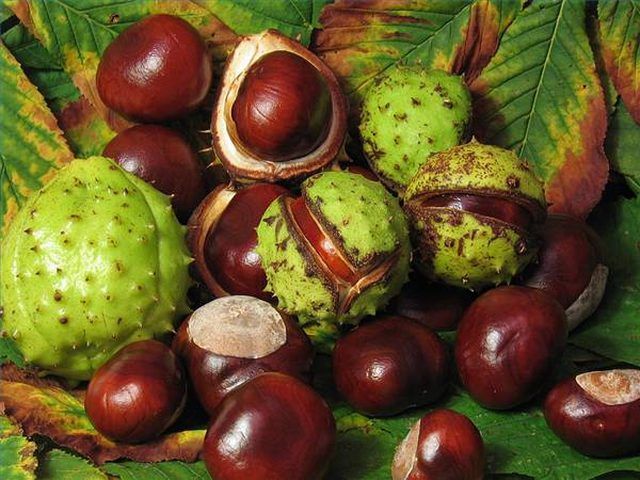Bulbs
Flower Basics
Flower Beds & Specialty Gardens
Flower Garden
Garden Furniture
Garden Gnomes
Garden Seeds
Garden Sheds
Garden Statues
Garden Tools & Supplies
Gardening Basics
Green & Organic
Groundcovers & Vines
Growing Annuals
Growing Basil
Growing Beans
Growing Berries
Growing Blueberries
Growing Cactus
Growing Corn
Growing Cotton
Growing Edibles
Growing Flowers
Growing Garlic
Growing Grapes
Growing Grass
Growing Herbs
Growing Jasmine
Growing Mint
Growing Mushrooms
Orchids
Growing Peanuts
Growing Perennials
Growing Plants
Growing Rosemary
Growing Roses
Growing Strawberries
Growing Sunflowers
Growing Thyme
Growing Tomatoes
Growing Tulips
Growing Vegetables
Herb Basics
Herb Garden
Indoor Growing
Landscaping Basics
Landscaping Patios
Landscaping Plants
Landscaping Shrubs
Landscaping Trees
Landscaping Walks & Pathways
Lawn Basics
Lawn Maintenance
Lawn Mowers
Lawn Ornaments
Lawn Planting
Lawn Tools
Outdoor Growing
Overall Landscape Planning
Pests, Weeds & Problems
Plant Basics
Rock Garden
Rose Garden
Shrubs
Soil
Specialty Gardens
Trees
Vegetable Garden
Yard Maintenance
How to Identify a Horse Chestnut Tree
How to Identify a Horse Chestnut Tree. The horse chestnut tree (scientific name Aesculus hippocastanum) is cultivated worldwide in temperate environments. The horse chestnut tree is common in parks and gardens because of its size, elegant domed shape and showy white flowers. The tree's name, horse chestnut, reflects in part the tree's fruit, which...
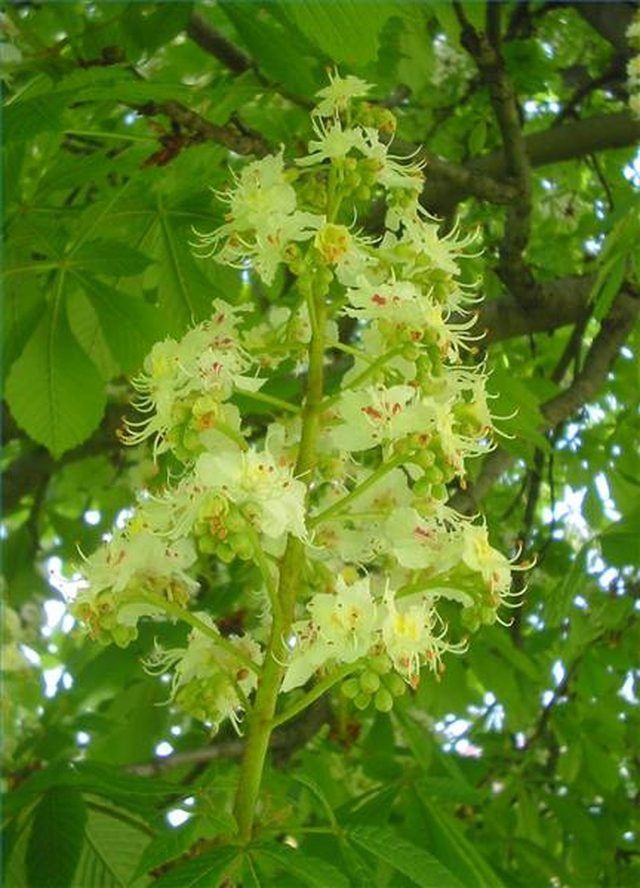
The horse chestnut tree (scientific name Aesculus hippocastanum) is cultivated worldwide in temperate environments. The horse chestnut tree is common in parks and gardens because of its size, elegant domed shape and showy white flowers. The tree's name, horse chestnut, reflects in part the tree's fruit, which has a chestnut-like appearance although it is not a nut. You can identify a horse chestnut tree by its several defining physical characteristics.
Observe the shape. Mature horse chestnut trees range from 40 to 60 feet tall and have a rounded or domed crown.
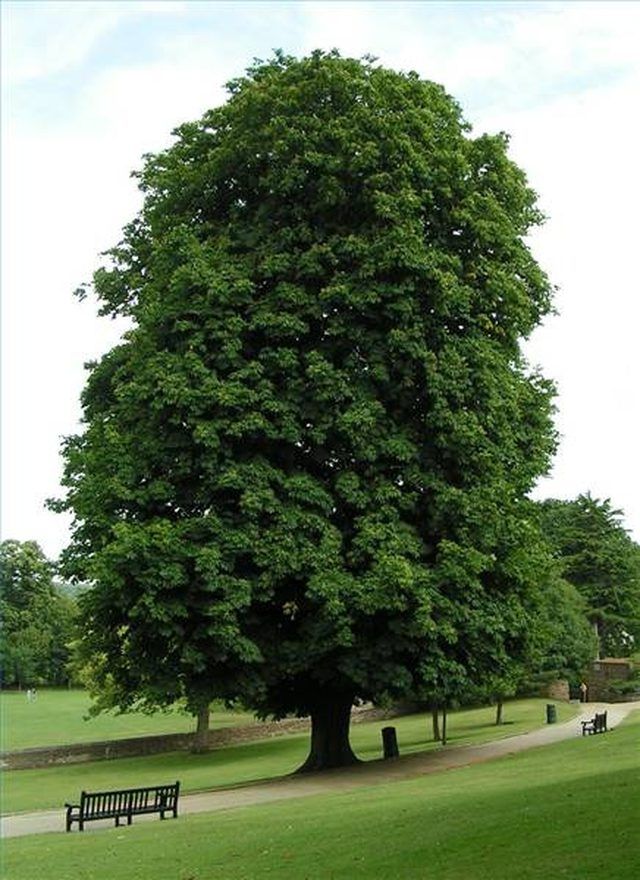
Examine the leaves. Horse chestnut tree leaves may be four to six inches long and range from a pale green below to a darker green above. The leaves are palmate and typically have seven leaflets.
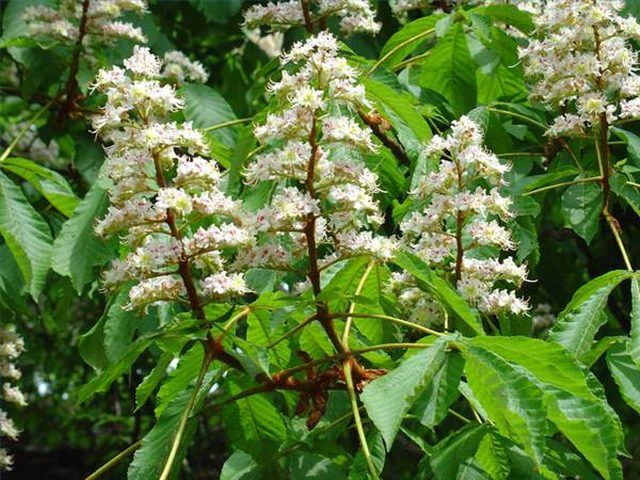
Examine the bark. Look for rough, irregular ridges and a scaly texture with coloring from light to dark brownish gray.
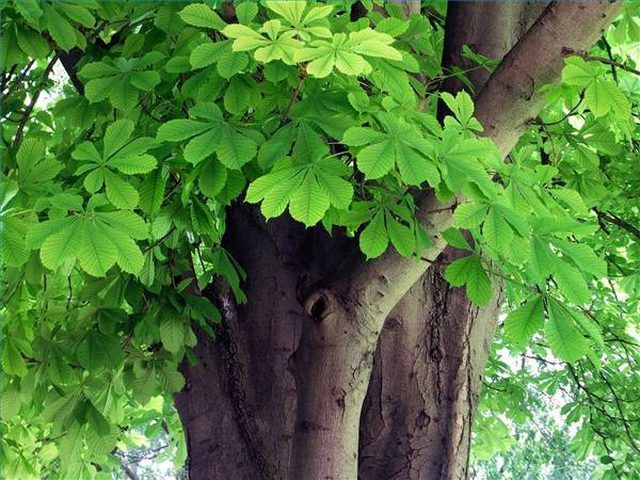
Examine the flowers. In spring, when the flowers appear, they grow upright five to eight inches tall. The flowers are white, showy and may have small reddish spots.
Examine the fruit. The horse chestnut tree fruit has a green, spiky epidermis containing one to three glossy brown seeds called conkers.
